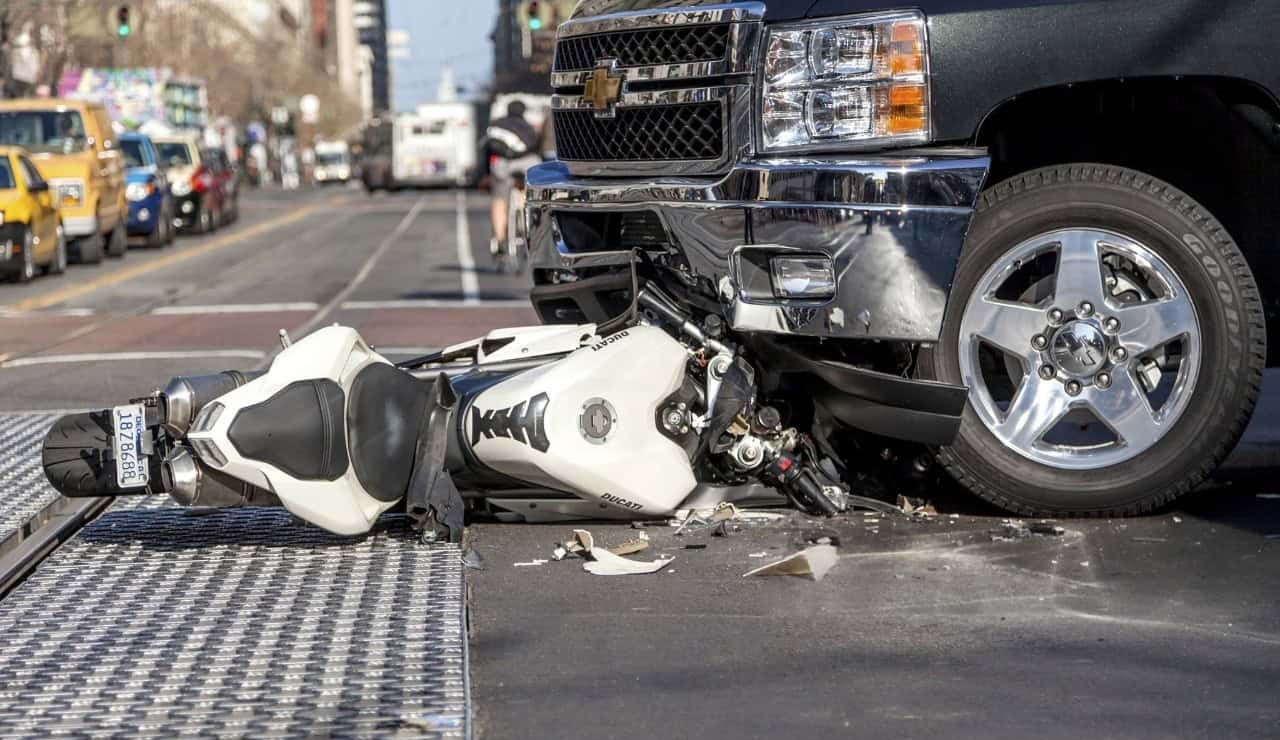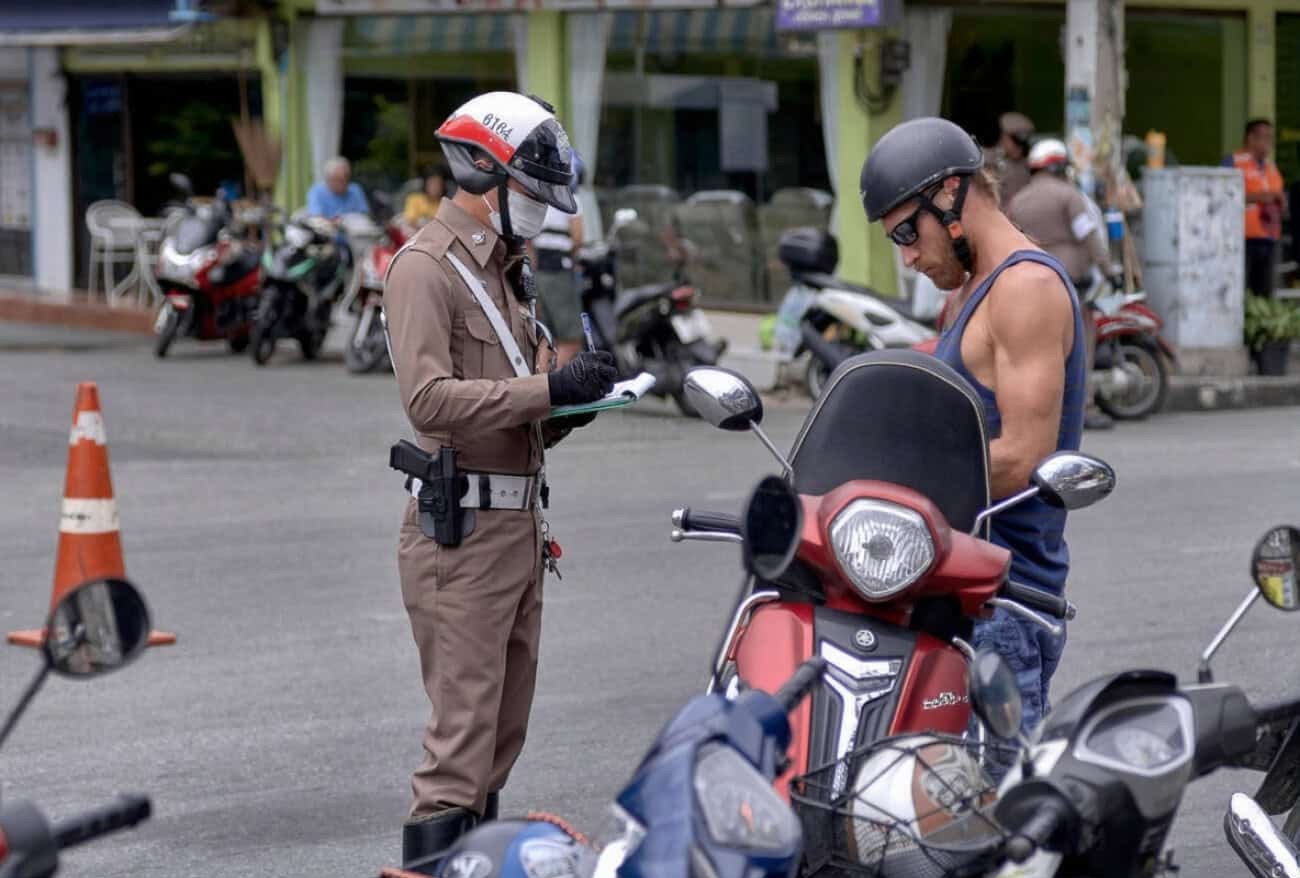
How to Get Motorcycle Insurance Step by Step
left for contents
Buying motorcycle insurance doesn’t have to feel like trying to read legalese while wearing a tinted visor. If you’re new to riding or getting back on two wheels after a break, the insurance process can seem confusing.
Some insurers sell bare‑bones policies that barely cover more than the minimum. Others wrap expensive extras into every quote. Not all motorcycle insurance policies are created equal, and most riders overpay because they don’t shop around. Yet you can get insured in less than 10 minutes if you know what to ask for.
In this step‑by‑step guide I’ll explain how to get motorcycle insurance in the U.S., what coverage types mean, and how to compare motorcycle insurance quotes without feeling overwhelmed. By the end, you’ll have a clear checklist for buying a policy confidently and a better understanding of the motorcycle insurance process.
Step 1 – Know What Kind of Coverage You Need
Before gathering quotes, think about the level of protection you need. Insurance is ultimately about transferring risk: the higher the coverage, the more your insurer pays if something goes wrong. Here are the core coverage types:
Liability Coverage (Required in Most States)
Liability coverage pays for damage or injuries you cause to others in an at‑fault crash. All states except Florida require riders to carry at least a minimum amount of bodily injury and property damage liability. Bodily injury liability helps cover medical costs, lost income and funeral expenses of other people involved, while property damage liability helps pay for repairing or replacing another person’s vehicle or property (allstate.com). Minimum limits vary by state (e.g., $25,000 per person/$50,000 per accident), and lenders may require higher limits if your bike is financed.

Collision Coverage
Collision covers damage to your motorcycle when you hit another vehicle or object. Whether you slide on gravel or rear‑end a car, collision pays for repair or replacement of your bike after your deductible. It is not required by law but is often required by lenders.
Comprehensive Coverage
Comprehensive protects your bike against non‑collision incidents: theft, fire, vandalism, weather damage or hitting an animal. Comprehensive is crucial if you store your bike outside or live in an area with theft risk.
Uninsured/Underinsured Motorist Coverage
If you’re hit by a driver with little or no insurance, uninsured/underinsured motorist coverage pays for your injuries and property damage. In some states this coverage is mandatory or strongly recommended.

Add‑Ons and Endorsements
Policies can include optional protections such as:
- Passenger liability (guest passenger): covers injuries to a passenger if they aren’t covered under liability.
- Optional equipment coverage: covers aftermarket gear like custom seats, crash bars or audio systems; comprehensive often includes $1,000 automatically, with the option to increase the limit.
- Towing and roadside assistance: pays for towing or labor when stranded.
- Rental reimbursement: pays for a rental bike while yours is being repaired.
- Loan/lease gap: pays the difference between the bike’s value and the loan balance if the bike is totaled.
An endorsement (also called a rider) is an amendment to your policy that adds, deletes or modifies coverage. It can increase standard limits, add new protections or exclude certain types of claims (ldi.la.gov). Exclusions are the opposite: they explicitly list situations not covered (e.g., racing or using your bike for commercial delivery) (baldwin.com). Review endorsements and exclusions carefully so there are no surprises later.
Deciding Between Liability and Full Coverage
If your bike is old or inexpensive and you can afford to replace it, basic liability plus uninsured motorist coverage may suffice. However, if you owe money on the bike, live in an area with theft risk or simply want peace of mind, full coverage (liability + collision + comprehensive) is sensible. Many lenders require collision and comprehensive on financed bikes.

Step 2 – Gather Your Information
Once you know your coverage needs, gather the information insurers will ask for. Having everything ready makes getting quotes faster and more accurate.
- Motorcycle details: Vehicle identification number (VIN), make, model, year, engine size and any modifications. High‑performance or modified bikes often cost more to insure (horaninsured.com).
- Personal details: Your name, date of birth, address, license number, and Social Security number for credit check.
- Riding history: How long you’ve held a motorcycle license, past claims or accidents, tickets and any completed safety courses. A clean driving record and completing a motorcycle safety course can lower premiums.
- Garaging address: Where you store the bike at night. Urban or high‑crime areas often see higher rates (lawtigers.com).
- Annual mileage estimate: Insurers may ask how many miles you ride each year because higher mileage generally increases risk. Occasional riders may qualify for seasonal or pay‑per‑mile plans (see Step 5). Learn how pay-per-mile and multi-bike insurance can cut your costs without cutting coverage.
Taking a safety course (often endorsed by the Motorcycle Safety Foundation) can reduce your premium. Keep your course completion certificate handy.
Step 3 – Compare Motorcycle Insurance Quotes
With your information ready, start gathering quotes. Here’s how the quoting process works and why comparison shopping matters.

How Quotes Work
When you enter your details online or over the phone, insurers run your information through risk models. They consider factors such as age, experience, driving record, bike type, engine size, zip code, credit score, coverage choices and annual mileage. Each insurer weighs these factors differently. That’s why two companies can offer drastically different premiums for the same rider.
Why Compare Multiple Insurers
Don’t settle for the first quote you receive. Most riders overpay because they don’t shop around. Rates can vary by hundreds of dollars per year depending on the insurer’s appetite for certain bike types or rider profiles. Compare at least three insurers to see a range of premiums and coverage options.
💰 Curious what riders actually pay? Check our article on U.S. motorcycle insurance costs and money-saving tips.
Factors Affecting Your Quote
The table below summarizes common factors, how they influence costs, and tips to mitigate them. Use it when comparing motorcycle insurance quotes in the USA.
| Factor | How It Affects Cost | Tips to Lower It |
|---|---|---|
| Type of bike | High‑performance sports bikes, modified/custom bikes or dual‑sport/adventure bikes tend to cost more; touring bikes, cruisers and scooters often cost less. | Choose a bike with moderate engine size; avoid heavily modified or high‑powered models if budget is a concern. |
| Age & experience | Younger riders and those with fewer years of riding often pay higher premiums; rates typically decrease in your 40s and can rise again after age 65. | Take a certified safety course; build experience on lower‑powered bikes. |
| Annual mileage | The more you ride, the greater the chance of a claim. Occasional or seasonal riders may see lower rates. | Consider pay‑per‑mile or seasonal coverage (see Step 5); combine errands to reduce mileage. |
| Location/zip code | Urban areas or regions with high accident or theft rates have higher premiums. | Store your bike in a secure garage; install anti‑theft devices. |
| Driving record | Accidents, speeding tickets and violations increase rates. | Maintain a clean record; attend traffic school to remove points if available. |
| Coverage level | Higher liability limits, lower deductibles or full coverage raise your premium. | Choose deductibles you can afford; balance premium savings with out‑of‑pocket risk. |
| Credit score | Insurers in many states use credit scores to assess risk; lower scores often mean higher premiums. | Improve credit, pay bills on time, and check your credit report for errors. |
| Bike value | Newer or more expensive bikes cost more to insure; rare bikes may have high parts costs. | If you own an older bike outright, consider liability only; add comprehensive if theft or weather damage is a concern. |
While you can’t control every factor, being strategic about the bike you buy and maintaining a clean riding record helps keep costs manageable.
Step 4 – Understand Motorcycle Insurance Terms
Insurance jargon can be intimidating.

Here’s a plain‑language glossary of terms you’ll encounter.
Premium
A premium is the price you pay to keep your policy active. Premiums can be billed monthly, quarterly or annually. If you stop paying, your coverage lapses (investopedia.com). Paying annually may save you money because some insurers offer a discount.
Deductible
Your deductible is what you pay out of pocket before your insurer covers the rest of a claim. Choosing a higher deductible lowers your premium but increases the amount you would pay if you file a claim. Pick a deductible you could afford in an emergency.
Liability Limits
Liability limits represent the maximum amount your insurer will pay for injuries or property damage you cause. Selecting higher limits protects you from paying other people’s expenses out of pocket but increases your premium.
Exclusions
Exclusions are events or situations not covered by your policy. Common exclusions include racing, stunts, wear and tear, and using your bike for delivery services. Read policy documents to understand what’s not covered.
Endorsements (Riders)
An endorsement (or rider) modifies your policy by adding or changing coverage. Examples include adding roadside assistance, increasing accessory limits or excluding certain uses. Endorsements often cost extra but tailor the policy to your needs.
Additional Terms
- Policy term: the duration of your coverage, typically six or 12 months.
- Named insured/Additional insured: the primary policyholder and any riders listed on the policy.
- Effective date: when your coverage begins; confirm this before riding.
Step 5 – Decide on a Policy Type
When comparing quotes, decide which overall policy structure fits your riding style and budget.
Liability-Only vs. Full Coverage
Liability-only policies meet state requirements and protect others if you cause an accident. They are the least expensive option. Choose liability-only if your bike is inexpensive, older or if you can afford to replace it yourself.

Full coverage combines liability, collision and comprehensive. It covers your bike regardless of fault and protects against theft, fire, vandalism or animal strikes. Many lenders require full coverage when you finance a motorcycle.
Seasonal and Usage-Based Options
If you live in a northern state or only ride occasionally, consider seasonal or usage‑based plans. Some insurers offer policies that automatically factor in winter storage, so you maintain coverage but pay less when your bike is garaged. Another innovative option is pay‑per‑mile insurance. For example, VOOM offers a pay‑per‑mile motorcycle insurance program where you pay for the miles you actually ride. Riders send a picture of their odometer to verify mileage. Pay‑per‑mile plans provide full coverage and are ideal for occasional riders who want to lower costs.
💡 Want to lower your premium even more? Discover clever ways to save on motorcycle insurance safely.
Optional Coverage Add‑Ons
Consider these add‑ons based on your riding habits:
- Breakdown and roadside assistance: helps if you run out of gas or have a flat.
- Accessory and gear coverage: covers helmets, jackets, gloves, luggage and other gear. Comprehensive policies often include a small amount of accessory coverage (e.g., $1,000) with options to increase.
- Gap insurance: pays the difference between your bike’s value and the remaining loan balance if totaled.
Decide which add‑ons are worth the premium. If you wear expensive gear or travel long distances, gear and roadside coverage may be wise. If your bike is financed and depreciating quickly, gap insurance may provide peace of mind.
Step 6 – Finalize and Get Proof of Insurance
After comparing quotes and selecting coverage, you’re ready to bind the policy.

Here’s what to expect:
- Choose a policy and insurer. Review the quote details, including coverage limits, deductibles, endorsements and exclusions. Make sure all riders you want covered are listed.
- Provide payment. You’ll likely pay the first month’s or full annual premium to activate the policy. If you pay annually, ask if there’s a discount.
- Confirm effective date. Make sure coverage starts when you need it. Some insurers allow immediate binding; others set the start date for the next day.
- Get your proof of insurance. Once payment is processed, you’ll receive an insurance ID card via email or mail. Print it and carry it on your bike or save a digital copy on your phone. Many states allow digital proof.
- Verify accuracy. Double‑check that your VIN, coverage limits and named riders are correct. Errors could delay claims.
- Set reminders. Note your policy’s renewal date and any automatic payment schedule. If you move or make major bike modifications, update your insurer immediately.
Tips for Getting the Best Rate
Insurance premiums aren’t set in stone. Use these tactics to reduce costs without compromising coverage:
- Bundle policies: Purchase motorcycle insurance along with auto, renters or home insurance through the same company. Bundling often yields discounts.
- Complete a safety course: Proof of training can reduce your premium.
- Raise your deductible: Increasing your deductible from $250 to $500 or $1,000 can lower monthly premiums. Make sure you can afford the deductible if you file a claim.
- Maintain a clean driving record: Avoid tickets and accidents; they directly impact your rates.

- Store your bike securely: Parking in a locked garage and adding an alarm can lower theft risk and premium.
- Pay annually: Some insurers offer a discount for paying the entire premium up front.
- Join a motorcycle association: Clubs and associations sometimes offer group discount codes. Check with your local rider club.
- Ask about loyalty and multi‑bike discounts: Insuring multiple bikes or remaining with the same insurer for several years can reduce premiums.
- Review your policy annually: As your bike ages and its value decreases, you might drop collision or comprehensive to save money.
⚙️ Don’t let a flat tire or dead battery ruin your trip—see how breakdown insurance keeps you rolling.
Buying Guide – Motorcycle Insurance Checklist
Before you click “buy” on any motorcycle insurance policy, run through this checklist:
✅ Coverage limits: Confirm bodily injury and property damage limits meet or exceed your state’s requirements and personal risk tolerance.
✅ Deductible fits your budget: Choose a deductible you could comfortably pay in an emergency.
✅ Uninsured/underinsured coverage: Ensure you have sufficient protection if hit by someone without insurance.
✅ Add‑ons reviewed: Decide if you need roadside assistance, passenger liability, gear coverage or gap insurance.

✅ Exclusions understood: Read your policy’s exclusions so you know what isn’t covered.
✅ Endorsements optional: Add or remove endorsements to customize coverage.
✅ Premium payment schedule: Know your payment amount and due dates; ask about discounts for paying annually.
✅ Policy term and renewal: Know when your policy expires and if it auto‑renews; set calendar reminders.
✅ Listed riders and VIN accuracy: Check that all riders and bike details are correct to avoid claim issues.
✅ Proof of insurance: Receive your digital or physical ID card before riding.
Final Thoughts
Navigating how to get motorcycle insurance may feel daunting, but it doesn’t require a law degree. Start by understanding the types of coverage and assessing how much protection you need. Gather your personal and bike information, compare quotes from multiple insurers and pay attention to factors that affect your premium.
Knowing definitions like premium, deductible, liability and endorsements empowers you to ask the right questions. Whether you choose basic liability, full coverage or a pay‑per‑mile option like VOOM, the goal is to ride with confidence knowing you’re protected.
Remember: you don’t need to be an insurance expert—just informed enough to make choices that fit your budget, bike and riding lifestyle.
🏍️ Ready to choose your insurer? Explore our top-rated motorcycle insurance companies for coverage and peace of mind.
Related

Classic Motorcycle Insurance: Protect Your Ride’s Legacy
If your ride’s got history, it deserves protection to match. Classic motorcycle insurance keeps legends alive and riders worry-free.


